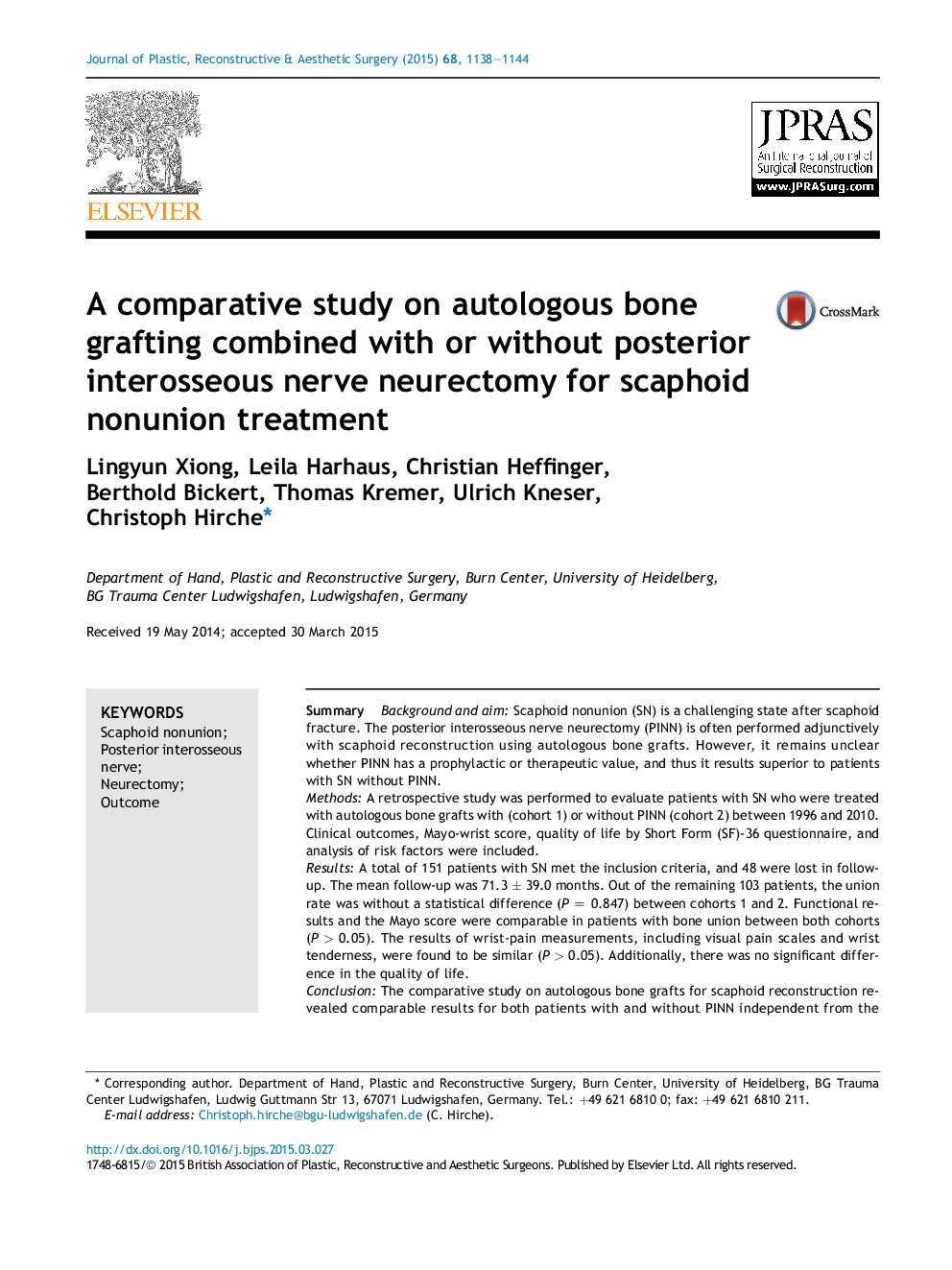| Article ID | Journal | Published Year | Pages | File Type |
|---|---|---|---|---|
| 6214299 | Journal of Plastic, Reconstructive & Aesthetic Surgery | 2015 | 7 Pages |
SummaryBackground and aimScaphoid nonunion (SN) is a challenging state after scaphoid fracture. The posterior interosseous nerve neurectomy (PINN) is often performed adjunctively with scaphoid reconstruction using autologous bone grafts. However, it remains unclear whether PINN has a prophylactic or therapeutic value, and thus it results superior to patients with SN without PINN.MethodsA retrospective study was performed to evaluate patients with SN who were treated with autologous bone grafts with (cohort 1) or without PINN (cohort 2) between 1996 and 2010. Clinical outcomes, Mayo-wrist score, quality of life by Short Form (SF)-36 questionnaire, and analysis of risk factors were included.ResultsA total of 151 patients with SN met the inclusion criteria, and 48 were lost in follow-up. The mean follow-up was 71.3 ± 39.0 months. Out of the remaining 103 patients, the union rate was without a statistical difference (P = 0.847) between cohorts 1 and 2. Functional results and the Mayo score were comparable in patients with bone union between both cohorts (P > 0.05). The results of wrist-pain measurements, including visual pain scales and wrist tenderness, were found to be similar (P > 0.05). Additionally, there was no significant difference in the quality of life.ConclusionThe comparative study on autologous bone grafts for scaphoid reconstruction revealed comparable results for both patients with and without PINN independent from the choice of bone graft. We anticipate a prophylactic value of PINN due to a potential injury or an irritation during dissection of the wrist capsule. Further research on PIN, its sensory characteristics, and its impact on wrist function is required.Levels of evidenceIII
